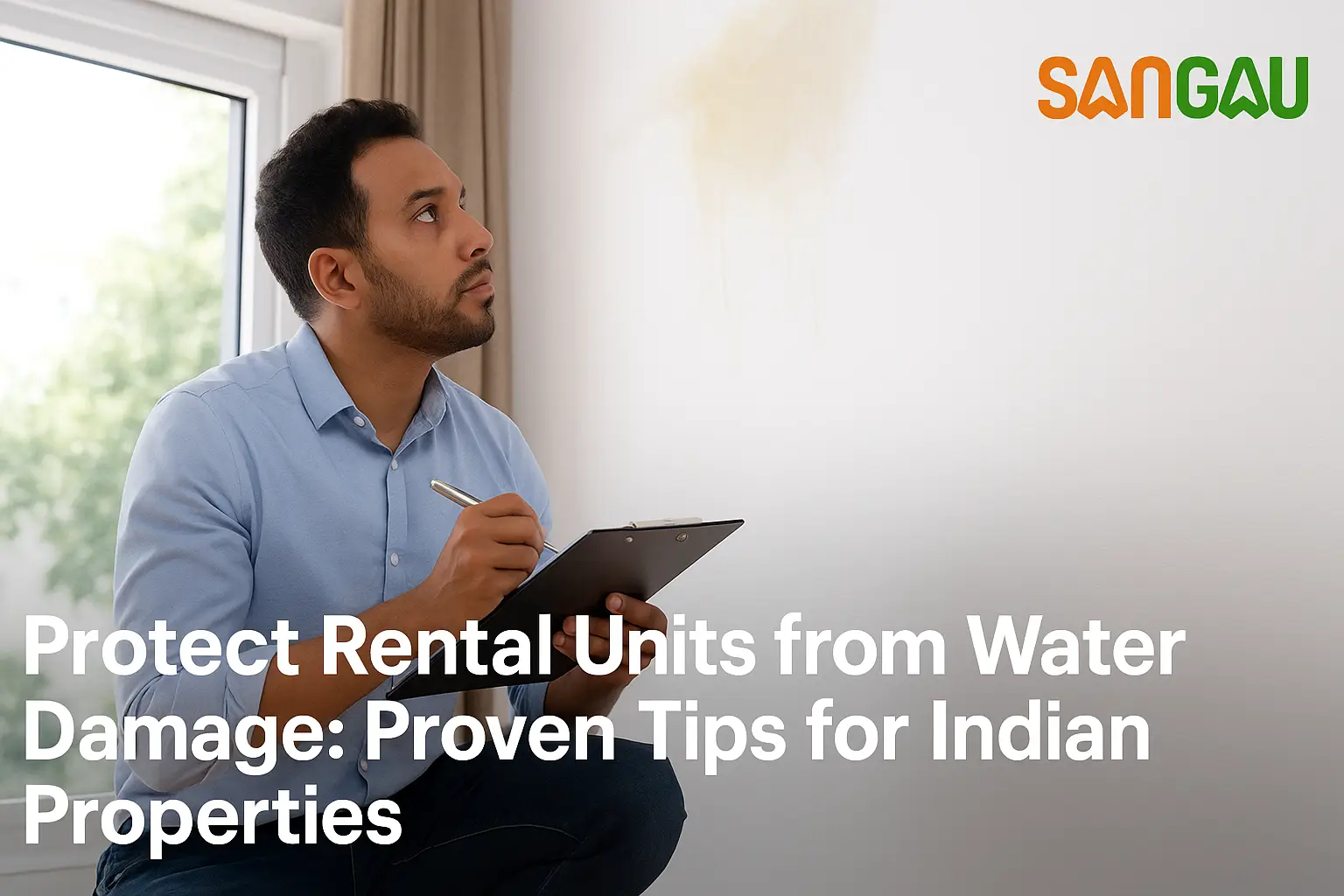Protect Rental Units from Water Damage - Proven Tips for Indian Properties.
Published : 22 Sep 2025

Water damage is one of the most silent yet destructive issues that rental property owners face in Indian cities. From leaky ceilings in Mumbai’s monsoons to damp walls in Delhi or burst pipes in Bengaluru, water-related problems can trigger a host of challenges — including mould growth, pest infestations, health hazards, and a decline in both tenant satisfaction and property value.
Fortunately, with the right preventive measures, many of these problems can be avoided altogether. Whether you're a landlord, an NRI property owner, or a multi-unit property manager, these practical, location-specific tips will help you safeguard your rental properties and protect your investment in the long run.
1. Know Where the Leaks Begin
In Indian rental units, common sources of water damage include ageing plumbing, unsealed bathroom joints, poorly waterproofed terraces, and sloped balconies with bad drainage. Older buildings may hide problems until it’s too late, while newer constructions may suffer from cost-cutting shortcuts. Stay aware of these high-risk zones — they’re your first line of defence.
2. Don’t Skip the Pre-Monsoon Inspection
Given India’s intense rainfall, annual pre-monsoon inspections are non-negotiable. Schedule checks around April or May, targeting terrace waterproofing, window joints, wall dampness, and drainage systems — especially in rain-heavy regions like Kochi, Chennai, or Guwahati. This simple step saves major costs later.
3. Invest in Quality Waterproofing — Not Quick Fixes
Covering up water stains with paint may hide the problem but won’t solve it. Opt for certified waterproofing products and hire trusted professionals to do the job. If you're an NRI, insist on photographic proof and regular updates from your property manager to ensure thorough work.
4. Train Tenants to Report Water Issues Promptly
Tenants are often the first to notice small leaks or stains. Create a simple reporting system — via WhatsApp, email, or a property management app — and clearly instruct tenants to notify you of water issues immediately. Early reporting prevents long-term damage.
5. Conduct Regular Plumbing and Sanitary Checks
Plumbing deterioration is often silent. A routine check every year — especially around water heaters, under sinks, and in bathrooms — helps detect slow leaks before they escalate. In apartment buildings, also inspect main supply lines and pressure systems to prevent tenant complaints.
6. Ensure Proper Drainage Inside and Out
Blocked drains or poorly sloped balconies can cause water to seep into walls or basements. Clean all external drains before the monsoon, use mesh guards to stop debris, and consider design upgrades in flood-prone or low-lying areas. Internally, watch out for poorly graded floors and blocked outlets.
7. Use Moisture-Resistant Materials During Renovations
When renovating, opt for waterproof tiles, moisture-resistant laminates, and treated paints, especially in bathrooms, kitchens, and ground floors. Avoid porous materials like untreated wood in damp-prone zones. These choices increase longevity and reduce repair needs.
8. Add Smart Leak Detection Devices
Smart leak detectors placed near water heaters, washing machines, or sinks can alert you instantly via mobile notifications. Many now include automatic shutoff functions. These are especially valuable for NRIs managing properties remotely and are readily available on Indian e-commerce platforms.
9. Document Every Incident and Take Quick Action
If water damage occurs, act fast. Take photos and videos, assess the source, and initiate professional drying and repairs immediately. Addressing the problem quickly prevents mould and protects tenant health. A small goodwill gesture, like a rent waiver, can go a long way in maintaining trust.
10. Choose Insurance That Covers Water Damage
Many property insurance plans in India exclude water-related issues. Read the fine print and opt for comprehensive coverage that includes seepage, flooding, and plumbing issues. For coastal or high-risk zones, consider add-on flood protection. NRIs should work with local agents who understand regional nuances.
Bonus Tip: Make Water Damage Checks a Maintenance Standard
Waterproofing, plumbing reviews, drainage inspections, and material checks should be a permanent fixture in your annual maintenance checklist. Partner with a proactive property management service to stay on top of these tasks year-round.
Conclusion
Water damage doesn’t have to be a nightmare. With thoughtful planning, regular inspections, tenant engagement, and smart tools, you can dramatically reduce your exposure to water-related risks and expenses. In India’s diverse climates and fast-changing real estate landscape, proactive maintenance is the best way to protect your rental units and keep tenants happy.
Looking to elevate your property maintenance strategy? Partner with experts who understand Indian rental realities and provide end-to-end support.
?Let’s Keep Properties Dry and Tenants Happy!
If you found this article helpful, feel free to like, comment, or share it with fellow landlords and property managers. Follow us for more smart tips and updates on hassle-free rental property management.
🔖Hashtags:
#SANGAU#RentalPropertyTips#WaterproofingIndia#PropertyMaintenance#LandlordAdvice


